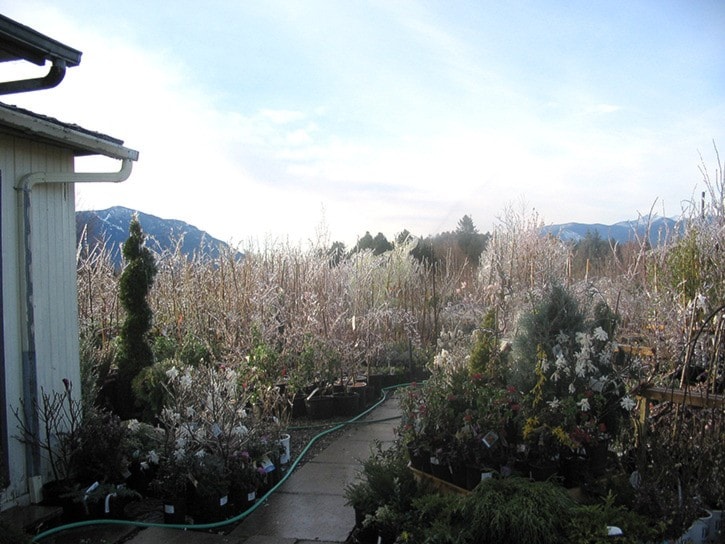It is spring! When the sun is shining, there are a lot of folks looking to get a jump-start on their veggie garden. Here in Erickson, we just had a good hard frost the other night. I expect we’ll have another light frost at some point again.
A lot of areas have their own microclimate. By that I’m not talking about climate zone 5b or 6, which simply measures the coldest winter temperatures recorded in more recent years. I’m talking about the way the cold air flows around the valley in the evening. Cold air drains down the mountainside almost flowing like water through low-lying areas first. Higher ground and areas sheltered by buildings seems to be safer places to start an early garden.
Some plants can take the cold better than others. Lettuce, if properly hardened off, can freeze to below –5 C. However, if it is grown too softly, it won’t take it. This phenomenon would have to do with the amount of water in the plant cells in relation to the “sugars”. Some plant cells, like those of the red osier dogwood, have an internal antifreeze in their stem cells, which allows them to go below –60 C without suffering any damage.
On the other hand, cells of plants like marigolds and tomatoes suffer frost damage very easily. The water in their cells freezes. As it expands, the water molecules break the cell walls and rupture them. That is why they turn black soon after. Water is one of the only substances that expands when it freezes. Like ice in an ice cube tray, it pops out of the mould. In any case, soft, fleshy plants don’t freeze well.
If you think of strictly below-zero weather causing damage to your crop you would be only looking at half the picture. A lot of our vegetables are actually from the south. Tropical plants really don’t like temperatures below 13 C. It is the same as if you just froze a more traditional northern European vegetable. We call it a chilling injury.
Have you ever put a cucumber in the fridge only to find it gone mushy? Fridge temperatures run around 4 C. Commercially, a cuke would be stored at a minimum 8 C to avoid a chilling injury. In the past few years, many folks have had to replant their cucumber plants because they just sat in the cold soil and rotted. This year, we seem to be having warmer and drier weather than spring 2011 and 2012.
One other note to mention about water and freezing: When a hard frost is forecast, I run frost protection in the nursery. This consists of sprinkling the plants with water through the early morning. As water freezes, it gives off heat to the plant’s cells underneath. As long as you keep adding more water to freeze, the exothermic reaction continues and it keeps the plant cells from getting frozen by the ice on their surface. It works well to –3 C. Then, not so well.
Evan Davies owns Beltane Nursery at 2915 Highway 3 in Erickson.
